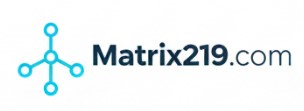In today’s digital world, protecting digital assets is a top priority for both individuals and businesses. Digital assets include sensitive data, documents, images, videos, and cryptocurrencies. This article explores the best practices for safeguarding digital assets from cyber threats and ensuring their security.
1. Encryption:
Encryption is a highly effective method to protect digital assets. Encrypting files and folders prevents unauthorized access. Tools like BitLocker for Windows and FileVault for macOS provide robust encryption solutions. Additionally, securing online communications with HTTPS ensures data safety during transmission.
2. Password Management:
Using strong, unique passwords is fundamental to account security. Passwords should combine uppercase and lowercase letters, numbers, and special characters. Password managers like LastPass and 1Password help generate and store secure passwords. Regularly updating passwords and avoiding reuse across multiple platforms adds an extra layer of protection.
3. Two-Factor Authentication (2FA):
2FA enhances security by requiring a second verification step, such as a code sent to your mobile device. Authentication apps like Google Authenticator provide an effective way to enable this feature, significantly reducing the risk of unauthorized access even if passwords are compromised.
4. Data Backup:
Regularly backing up data ensures asset recovery in case of loss or cyberattacks. Cloud backup services like Google Drive offer secure and convenient solutions. Ensure backups are encrypted and stored safely. Performing periodic backups prevents the loss of critical information.
5. Regular Software Updates:
Keeping software and systems updated helps mitigate security vulnerabilities. Updates often include patches for bugs and security enhancements. Enable automatic updates for operating systems and installed applications to minimize exposure to cyber threats.
6. Phishing Awareness:
Phishing attacks attempt to steal sensitive information by impersonating trusted sources. Avoid clicking on suspicious links or opening attachments from unknown senders. Always verify email senders and content before interacting. Using antivirus software and firewalls helps detect and prevent phishing attempts.
7. Device Security:
Devices used to access digital assets must be secured with antivirus programs and firewalls. Use strong passwords to lock devices and enable encryption for computers and mobile devices. Keeping all devices updated with security software ensures maximum protection.
8. Employee Training and Awareness:
For businesses, cybersecurity training for employees is essential. Conducting workshops and awareness sessions educates staff on the importance of digital asset protection and recognizing common cyber threats. Well-trained employees serve as the first line of defense against security breaches.
9. Digital Asset Monitoring:
Regularly monitoring digital assets helps detect unusual activities. This includes reviewing bank accounts, email activities, and social media accounts. Security monitoring tools can help identify suspicious activities early and enable prompt action.
Conclusion:
Protecting digital assets requires following best cybersecurity practices to ensure security and confidentiality. By implementing encryption, password management, 2FA, and regular backups, digital asset security can be significantly enhanced. Remember, cybersecurity is a continuous process that demands regular updates and learning to maintain effective protection.
Source:
For more details, read the original article on Matrix219.Net
